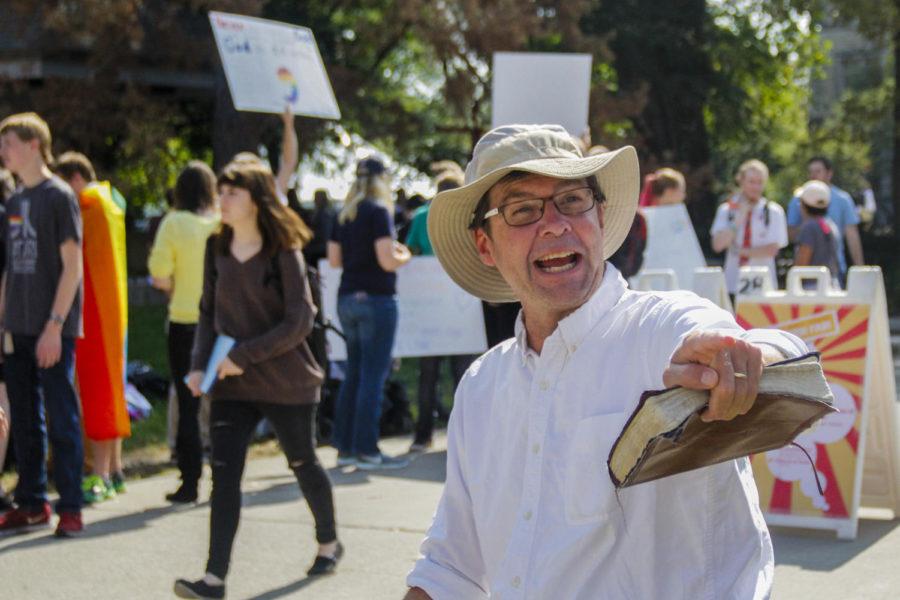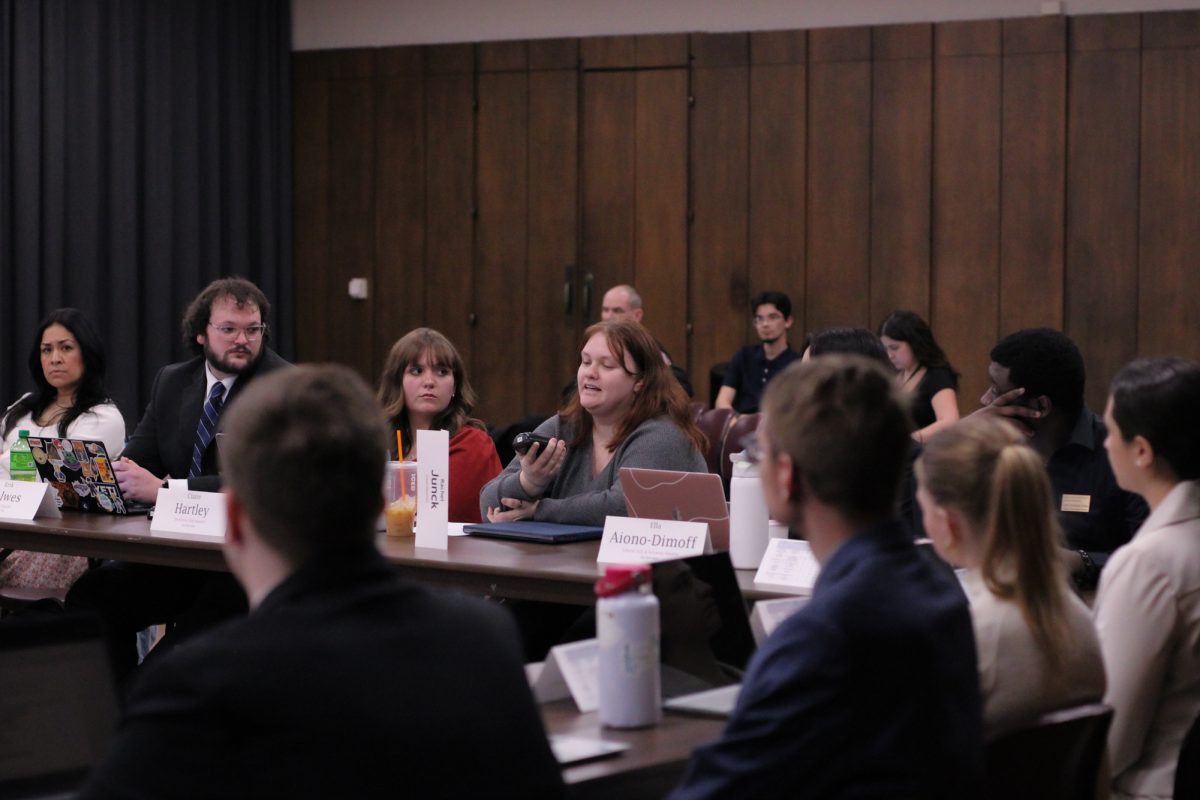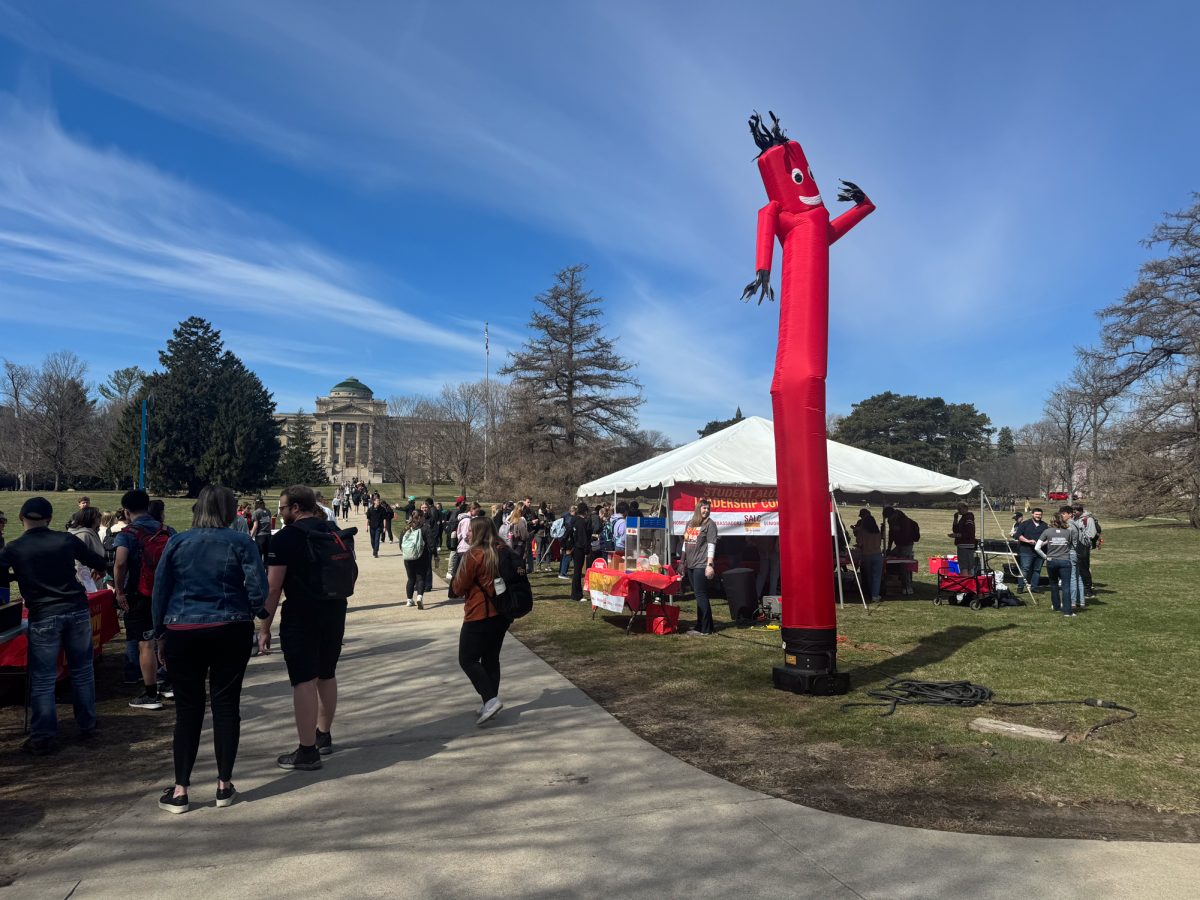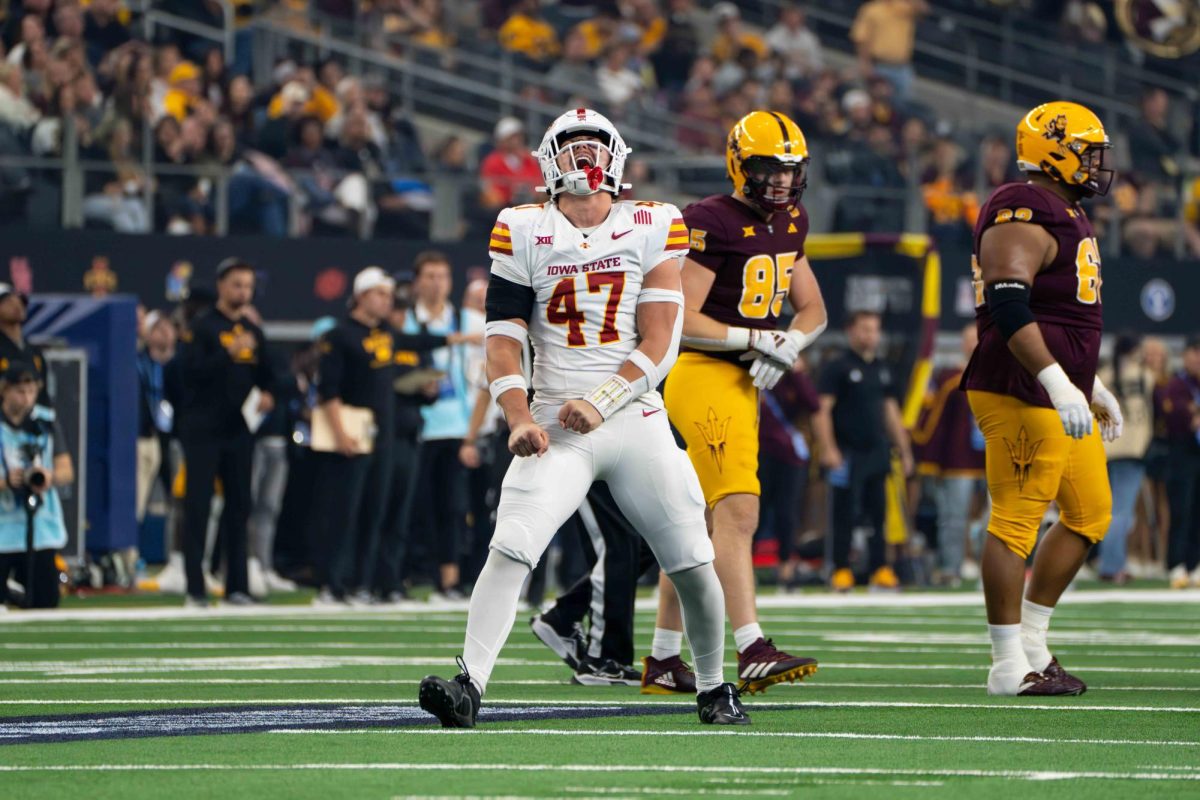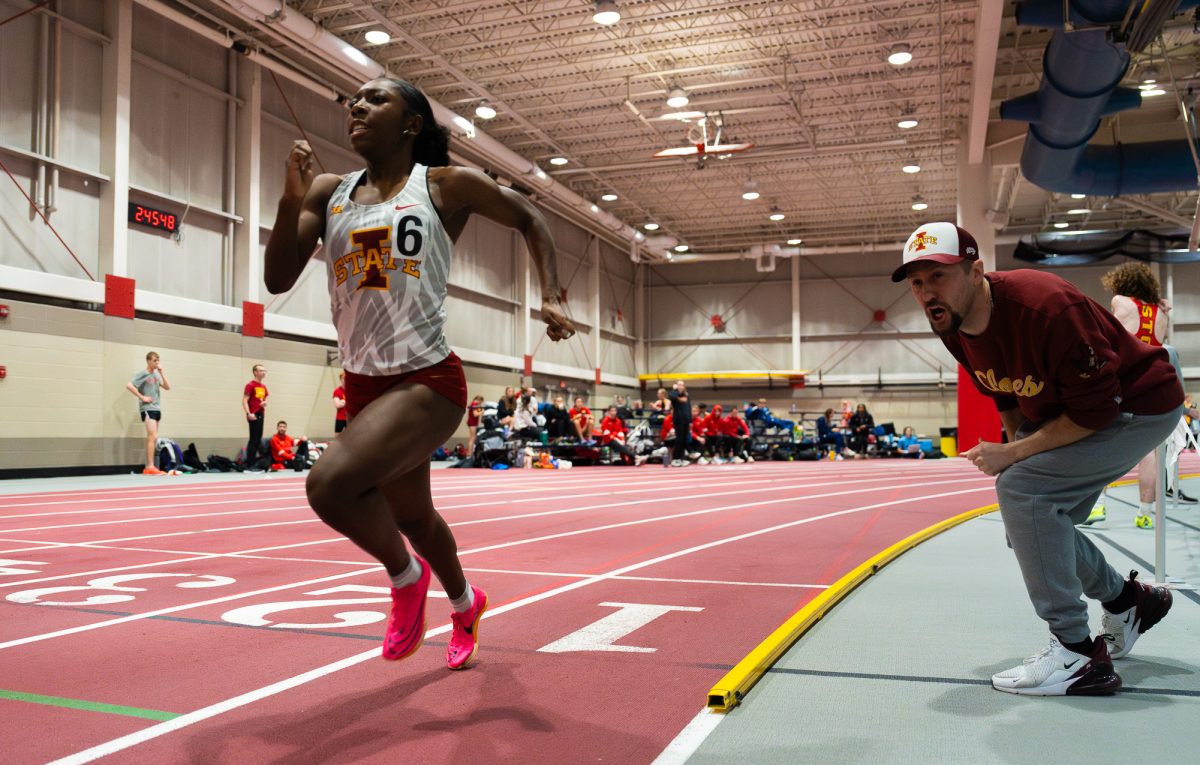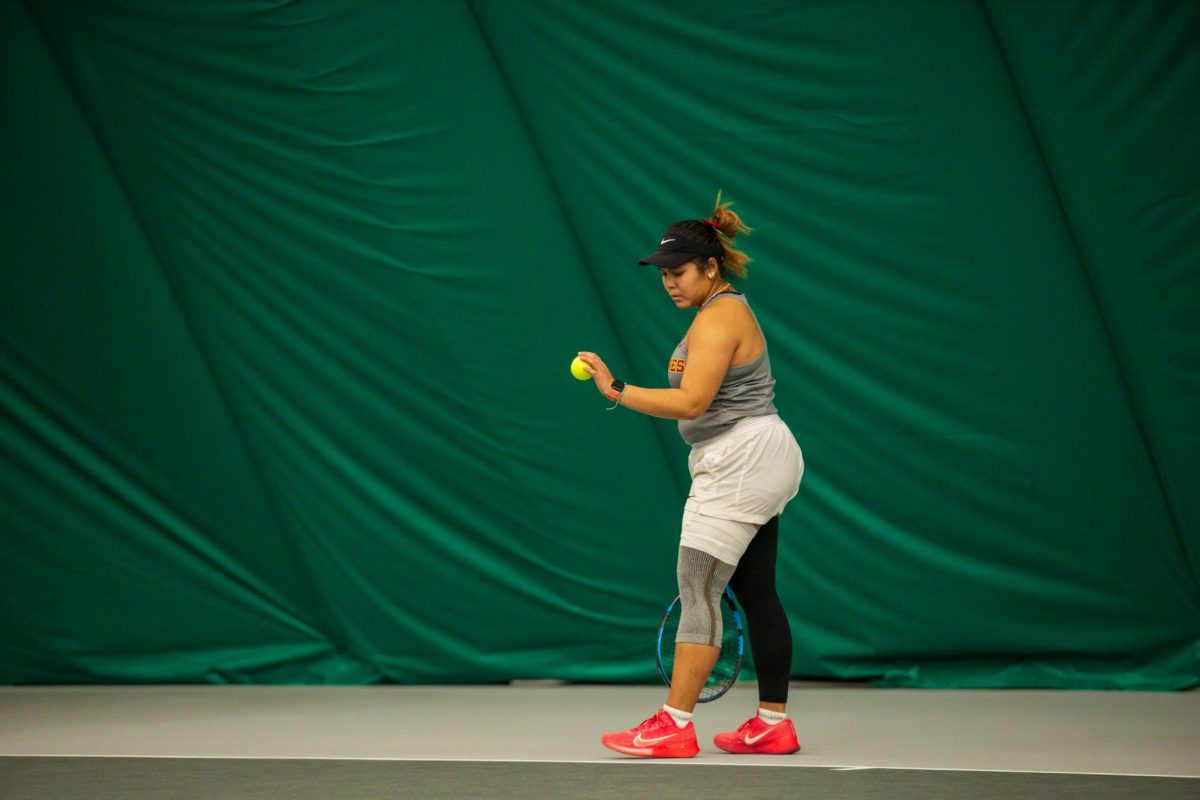Free speech zones limited to two locations on campus
Kelby Wingert/Iowa State Daily
Pastor Tom Short, a traveling campus evangelist, set up in the free-speech zone in front of Parks Library on Sept. 25. Short goes to campuses to talk to students about his beliefs that “God is real, heaven is true and Jesus is the way to heaven.” Short said his goal is to “spark conversation.”
August 17, 2015
Iowa State has two free speech zones on campus where students can hold events or give demonstrations, but it is important to understand the university’s policies related to these events.
The first one is the area to the south of the library [and] west of the Hub named the Edward [S.] Allen Free Speech Zone.
“Allen was a professor at Iowa State a number of years ago who was very active in supporting free speech,” said Warren Madden, senior vice president for business and finance.
The second area is south of the Campanile, between the road that goes north of the Memorial Union and the Campanile, he said.
In these two areas, students are allowed to pass out brochures, carry signs or poster boards, give speeches and demonstrations, Madden said. Signs have maximum size dimension requirements and must not be left unattended.
“Unless somebody has actually reserved them, it’s open to anyone on a first-come, first-served basis,” Madden said.
Rules are in place on the size of the event as well, he said.
If students are unsure about the event they want to hold, they can visit Facilities Planning and Management or review Iowa State’s Policy Library.
“If your crowd is going to be more than 200 people, then you’re supposed to file a permit,” Madden said. “There’s an approval process for holding [large] events.”
While these areas are great for students wanting to be heard, some students and organizations think the entire university should be a “free speech zone.”
“I think it’s really questionable why on the campus of a college that is supposed to be about the exchanging of ideas you go out of your way to limit communications,” said Frank LoMonte, executive director of the Student Press Law Center.
“The key in First Amendment law is always whether the speaker had a reasonable opportunity to reach the targeted audience,” LoMonte said. “You have to be able to speak to the bulk of the student foot traffic during a time when students are actually going to be on the campus.”
The Foundation for Individual Rights in Education, or The Fire, aims to “defend and sustain individual rights at America’s colleges and universities,” according to the group’s website, Thefire.org. One of these rights is the freedom of speech.
“A university exists to educate students and advance the frontiers of human knowledge, and does so by acting as a ‘marketplace of ideas’ where ideas compete,” said Samantha Harris, director of policy research at The Fire.
Although LoMonte and Harris agreed that Iowa State may have understandable reasons for limiting free speech to these areas, they both said better alternatives exist to free speech zones.
“The justification for free speech zones is usually about public foot traffic,” LoMonte said. “It’s about trying to keep the walkways clear so that people are not encountering protest and demonstrations that impede their path.
“But when you say that all expressive activity needs to be in one small road, you’re literally saying I can’t stand on the sidewalk and hand people a pamphlet, and that doesn’t interfere with foot traffic at all,” he said.
Harris said universities often have policies like these to maintain order on campus and prevent disruption of the educational environment.
“The Fire’s position is that rather than restraining speech before the fact, the policy should simply prohibit demonstrations that disrupt or materially interfere with classes in session,” Harris said. “Trust students to demonstrate and protest responsibly.”
Safety is the number one issue, Madden said, and then managing traffic.
“We do not want classes to be disrupted,” he said. “The reason these areas have been identified is they are far enough away from classroom buildings and you can do events there without really interfering with people.
“Both of those areas, people can use magnified sound. You can use sound systems or microphones,” Madden said.
The Parks Library-Hub area is used more than the area south of the Campanile.
“[In] recent years, the area by the Hub gets used more than the area by the Campanile, unless you’re trying to do bigger events … [or] are trying to televise or film those events,” Madden said.
The university’s policies may be in place for good reason, but LoMonte said a university should be completely open to free speech.
“The beauty of having a campus that is open for free speech is that even a person who doesn’t have resources can still be heard,” he said.
Iowa State is currently fighting a freedom of speech lawsuit filed by two students.
Paul Gerlich and Erin Furleigh, president and vice president of NORML ISU, a student club advocating marijuana law reform, attempted to create T-shirts bearing a cannabis leaf and Cy, ISU’s mascot.
After several T-shirt ideas were rejected, ISU’s guidelines were updated to ban any designs with “dangerous, illegal or unhealthy products, actions or behaviors.”
The Fire then sent a letter to ISU administrators advocating for NORML ISU, and the students filed a lawsuit against Iowa State in the U.S. District Court, claiming that the university infringed on their First Amendment rights.
Iowa State filed a motion to dismiss the lawsuit, but was rejected by Chief Judge James E. Gritzner. A jury trial has been scheduled for Dec. 14, 2015.
Whether students like the idea of being able to express their opinions publicly at any location or prefer the idea of being able to walk to class without a barrage of signs, many students and some non-students take advantage of the two free speech zones throughout each year.
“You’ll see a number of people out by the Hub speaking, many of them are religiously connected people that evangelize and move around college campuses,” Madden said. “And people can walk by and listen or not listen.”
Madden said this fall will be filled with political activists as Iowans begin to engage in the Iowa Caucus process.
With 16 Republican and five Democratic presidential candidates campaigning in Iowa, students should expect to see many of them coming through campus and the Ames community, he said.
“From a university policy perspective, we think it’s a great opportunity for students and people at Iowa State to be exposed to all the political candidates,” Madden said.
“We need to be balanced and even-handed, so we try to be sure the facilities are being managed fairly,” he said. “We treat everybody the same way, and that sometimes gets to be its own challenge.”


